Avocado fruit is one of the most nutritious and delicious fruits. Many people like to grow them in their yards, but they need special care and maintenance. There are a million reasons you want to grow Avocado at home instead of buying at a grocery store, including the environment, humanitarian concerns, and the pure joy of eating something you’ve grown yourself.

But you should know a lot about growing Avocado from seeds. There are a few ways to start an Avocado pit, and some are better than others; besides, you have to consider fertilizer, weather, and more.
How to grow Avocado from seed to harvest
How long does it take to grow Avocado from seed to harvest?
- Avocado trees can live up to 200 to 400 years, but they cannot produce much fruit worth harvesting until the end of their age.
- If you’ve bought and planted a tree, you can probably expect to see your first fruit three to four years after planting. Growing from seed can take five to thirteen years for the tree to mature enough to bear fruit.
- Patience is essential for success whether you start with a seed or a tree grown from a nursery. Healthy Avocado trees can grow annually for about 3 feet until they reach their maximum height of 40 feet long.
Will an Avocado tree grown from a seed produce Avocados?
- Seed-grown Avocados will not bear fruit unless they are at least a decade old. Trees planted from the nursery will bear fruit more quickly, starting at about three or four years old.
- Like Apples, Avocado seeds themselves don’t usually produce Avocados. Any Avocado seed can grow into an Avocado plant, not necessarily a fruit tree. Experts say that you have about a 20 percent chance that your Avocado seed will produce Avocado.
- Growing an Avocado plant from a pit is fun and educational, and it usually takes only two to six weeks for the pit to sprout. After that, it takes 10 to 15 years for the plant to grow big enough for the fruit, which it only does under suitable conditions.
How do I know if my Avocado tree will bear fruit?
- Look for small, greenish-yellow flowers on the branches of your Avocado tree from January to March. Flowers bloom and close over two days, which is a good sign that your tree is ready to bear fruit. Watch out for flies’ activity around tree flowers.
- You should plant more than one tree to encourage pollination. Plant rootstock grafted seedlings instead of seeds that you started yourself. You should fertilize Avocado trees with nitrogen-rich fertilizer from late winter to early spring and then early summer.
Can I put Avocado seed straight in soil?
- An Avocado tree without toothpicks is an easy way to grow. This is a simple way to sprout seeds directly into a pot with soil, followed by at least a hundred unsuccessful attempts with toothpicks.
- The Avocado pit can be placed directly into a pot or poured into the water to take root. Or, stick three toothpicks into the pit and place them on a glass of water whose tip points upwards. Growing pits in a warm, bright spot, like on windows, is essential.
- Bury the finished Avocado seed, and sink it in the soil at a depth equal to half the length of the seed. For example, if the seed is 3 inches long, bury it 1 1/2 inches below the soil surface.
How long does it take an Avocado seed to sprout?
- Avocado seeds planted in potting soil take longer to grow but are more likely to grow successfully. When you use this technique, peeling the seeds will speed up the growth, for which the process is: to remove the external flesh and wash the seeds in hot water. You should allow the seeds to dry at room temperature for 24 to 48 hours.
- Place the glass in a hot place with direct sunlight and fill the water as needed. You see, start sprouting roots and stems in about two to six weeks. Try another seed if you’ve followed this procedure so far and haven’t seen roots or stems sprout in more than six to eight weeks.
In case you missed it: How to Prepare the Soil for Avocado Plants/Trees: Best Soil Mix, pH, Compost, and Recipe
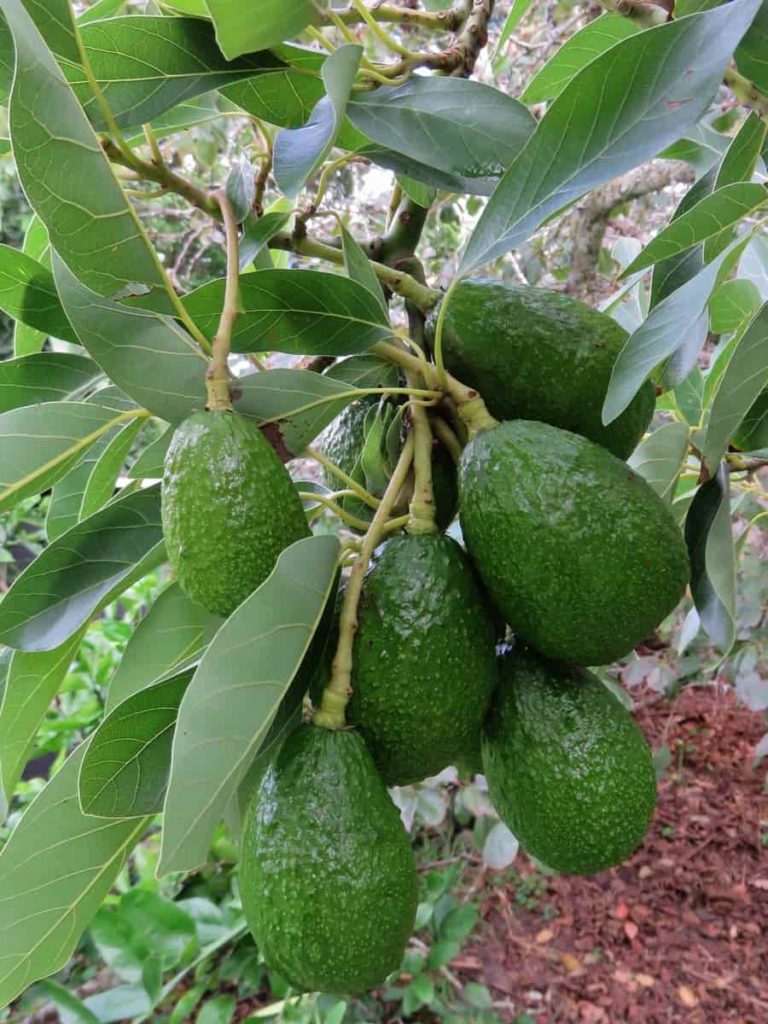
Why won’t my Avocado seeds sprout?
- Your Avocado will have difficulty growing if the temperature is too cold. It can still sprout, but it will take a long time. The ideal temperature is about 25°C.
- If you don’t soak your pit, it may not yet have reached the moisture level needed to trigger the growth. You should soak it in water for 1 or 2 days.
- Wash your hands before dealing with the pit; otherwise, you risk introducing bacteria into the bag. Bacteria would also prefer incubator conditions to spread. If your pit smell like vinegar, it’s too late. You’d better try your luck with a new pit.
Do Avocado trees need a lot of water?
- You can find Avocado roots in the top six inches of soil, which can dry out quickly. Newly planted trees may need water twice per week in their first year. Mature Avocado trees require about 2 inches of rain or equivalent water per week during summer.
- Like other fruit-bearing trees, Avocados require enough water to thrive and produce fruit. Mature Avocado trees require around 40 to 50 inches of rain every year. Young trees need water more often than mature trees to establish strong root systems.
- A 10 feet (diameter) tree should get 10.3 gallons daily and be watered every three days.
- A pot Avocado tree or a newly planted Avocado tree should usually be watered every two to three days, while you can water a mature planted tree once a week. You should give enough water to the tree to soak the soil without fully saturating it. As a general rule, Avocado trees perform best when their soil is allowed to dry between water.
What happens if you over water an Avocado tree?
- Overwater Avocado plants are prone to root rot if the plant is not taken care of well. Phytophthora fungus that causes root rot in Avocado plants. Such roots are unable to absorb enough water/minerals from the ground.
- Notice that the leaves are very small, and the leaves are pale green and small. These are classic signs of a tree growing in heavy soil and is often heavily watered. Its roots are rotting.
- Too much water causes root rot in Avocado trees. When the roots cannot perform their job of supplying water to the leaves, the leaves turn and turn yellow or brown. If your tree grows new leaves, they will be smaller and smaller, and the stems leading to the leaves will soften the touch.
- At first, the canopy will begin to thin, and the leaves will become smaller and yellower and start to curl. To find the roots, you should try digging around under the Avocado tree canopy. If the roots turn black, there is more water in the plant.
Which side of Avocado seed goes down?
- The seed’s broad end is considered at the bottom for propagating purposes. The pointed end is at the top. You should insert several toothpicks into the sides of the seed. They should be placed halfway to the pit.
- The slightly dotted end is up, and the flat end is down. For your pit to sprout, you’ll need to place the end of the bottom root in the water, so it’s very important to find out which end is ‘up’ and which is ‘down’ before you pierce it with toothpicks.
- Plant seeds so the pointed end is about an inch above the soil’s surface. You should always keep the soil moist until the Avocado plant is established. Often give the plant enough water, so the soil is moist but not wet.
Do I have to cut my Avocado plant?
- You should not prune the Avocado plant when it is actively growing. To prevent a young plant from becoming weak and spindly, trim the central stem to about half its height when it reaches 6 to 8 inches. This should force the plant to move out of the branch. Trim the tip and top leaves when the plant is about 12 inches.
- The severe first pruning should occur when the plant is only 12 inches tall. This time cut it back to 6 inches and let the new leaves and stems form. As it gets longer, force new branches to form by pinching new growth during the summer, as the Avocado fruit progresses on new growth.
- Cut off the tip and upper leaves of the main stem after being 12 inches long. When you prune out the main stem and other branches, the plant will add energy to the rest of its growth, including in the central stem.
Will a potted Avocado tree bear fruit?
- As container plants, trees must be 6 to 8 inches tall with a trunk caliber of 1.5 to 2 inches before the fruit can be set. It requires a large, 24 inches pot. Young grafted plants take a few years to reach this size. Avocado trees are evergreen and require a good light-year period to bear fruit. The indoor trees need the sunniest, most south-facing windows in the house.
- Don’t expect fruit when growing Avocados in containers. Cool nights are needed to force indoor plants to bloom and bear fruit. They may take up to 10 years to reach the fruiting stage. If you get fruit, the taste isn’t as good as that produced commercially from the rootstock.
In case you missed it: 20 Common Avocado Tree Problems: How to Fix Them, Solutions, and Treatment
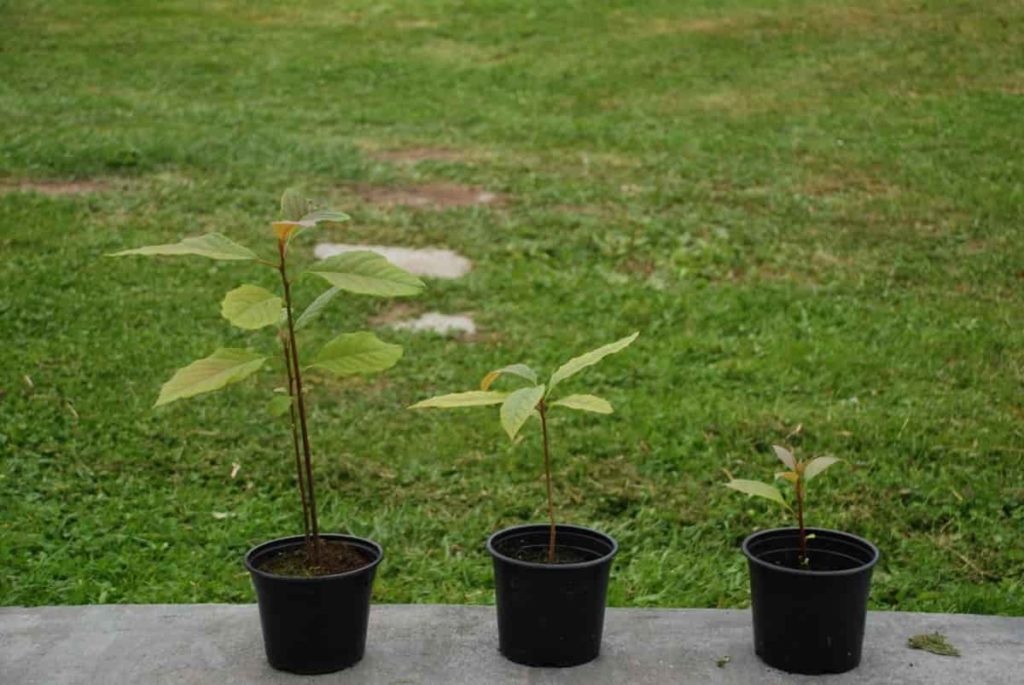
How do you encourage branching in an Avocado tree?
- Pinch tips of new lateral branches when they are 6 to 8 inches long, which should encourage more new branches. Then, the pinch is the new lateral growth that develops on these branches and repeats until the plant is complete and compact. It is not necessary to pinch the small stems.
- If you grow an Avocado plant from seeds, the shoot usually grows in a single, stem-bearing stem. Remove half its height when it reaches 6 to 8 inches to encourage the plant to branch out. Pinch each growing tip to encourage a second round of branches when each new branch reaches 8 inches.
How do I get my Avocado tree to flower?
- Avocados need a chilling period to promote flowers and fruits. They must experience temperatures between 0°C and 7°C during the dormant period. The temperature needs to be fairly consistent for several months.
- From about March, Avocado trees produce these flowers. But very few flowers will produce fruit as less than 1 percent will be pollinated. Taking up to eight months between blooming and harvesting, you’ll see edible fruits between June and October, depending on growing conditions and the local environment.
What is the best fertilizer for Avocado trees?
- The basic nutrients required for Avocados are nitrogen, phosphorus, and potassium. The secondary nutrients needed are calcium, magnesium, and sulfur. Micro-nutrients are zinc, iron, manganese, copper, boron, molybdenum, and chlorine.
- Avocado requires nitrogen first and a little zinc. You can use citrus tree fertilizer as Avocado fertilizer or go organic and use compost, coffee grounds, fish emulsion, etc. The soil which contains these materials is generally rich in enough nutrients to support an Avocado.
- Once you’ve planted it, fertilize your Avocado tree three times in the first year, once in late winter or early spring, once in mid-summer, and once in the fall. Your tree will become dormant in winter, and you should not fertilize it after late fall.
Does Avocado need full sun?
- Avocado trees thrive best in bright, direct, unfiltered sunlight. You can place your Avocado tree in an area that receives partial sunlight. But Avocado trees perform best if they receive at least 6 hours of direct sunlight daily. If you keep your Avocado tree indoors, keep it through a large, sunny window.
- Avocado trees need full sunlight. While Avocados can tolerate partial shade, they don’t grow well when they receive mostly indirect sunlight.
What do you do after an Avocado seed sprouts?
- All you need is a fresh Avocado pit, three toothpicks, and a glass of water. Stick the toothpicks firmly to the sides of the seed and use them to support the seed over a glass of water whose blunt ends have submerged an inch deep.
- Transfer the sprouting Avocado pits into a pot containing soil. You should continue to water the growing Avocado pits, and they will continue to grow. Avocados make the best house plants.
- When the Avocado stem becomes 6 or 7 inches long, cut it back to 3 inches. This causes the plant to go into the branch and become bushy. When the Avocado plant reaches 6 inches tall again, plant the seed in a 10-inch-wide pot with commercial soil.
- To plant Avocado seeds sprouted in the soil in a frost-free area, dig holes in the prepared soil to the depth of the root system and about twice as wide. You should place the plant into the hole so the roots spread into the soil.
In case you missed it: Best Fertilizer for Avocado: Homemade, Organic, Natural, Liquid, Compost Manure, NPK, and Schedule
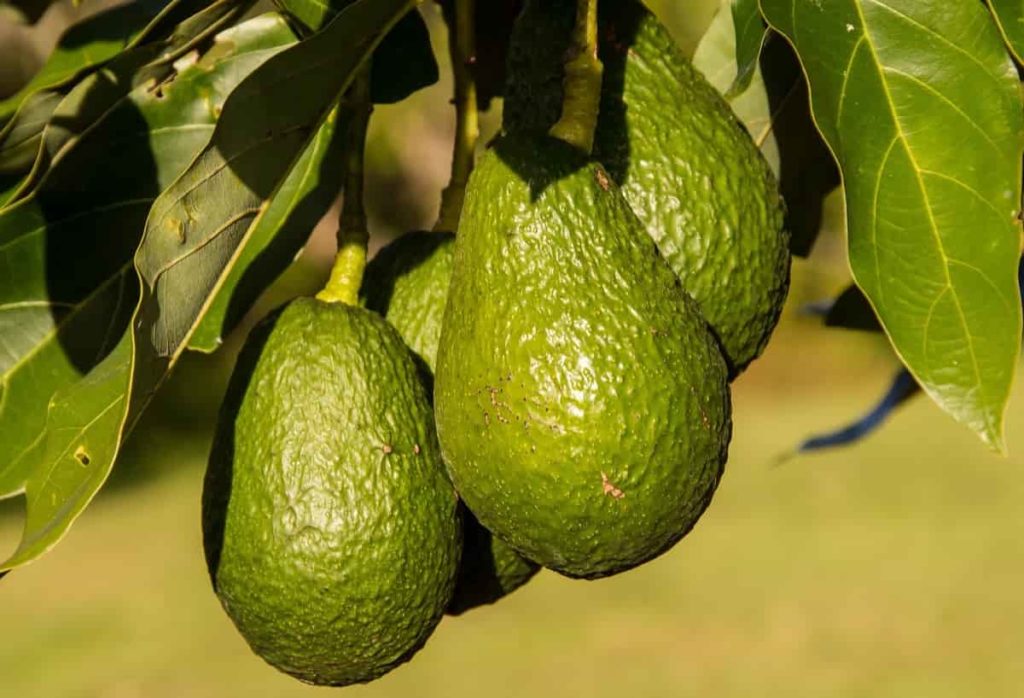
What kills Avocado trees?
- Root rot and fungal diseases are the biggest causes of Avocado tree death. Several varieties affect Avocado trees; if not addressed quickly, they can capture and kill the tree.
- Avocado trees often get sick because they are picky in minerals, salinity, and fertilizer. Most varieties also suffer from three types of root rot, one of which is soon fatal. If you’ve noticed that your Avocado tree has an infection or any other problem, you must act immediately to save it.
- To revive the Avocado tree suffering from fungal diseases like root rot, treat it with fungicides and gypsum. Also, do not apply too much water to the plant. Add mulch to ensure good drainage. If the Avocado tree is dying due to salt burning, the water will be deep on a regular schedule.
Are coffee grounds good for Avocado trees?
- Organic-minded growers may prefer to go for a different type of fertilizer. You may consider using coffee ground, compost, or fish emulsion to help your Avocado tree flourish.
- Coffee grounds help Avocado plants by adding nitrogen, potassium, magnesium, and other nutrients, which are good for Avocado trees.
- The coffee ground used is good for Avocado plants because they add nitrogen and some acidity, which Avocado plants prefer.
What kind of soil do Avocados like?
- Avocado trees-like loose, rich, well-draining soil. You should place the Avocado in a container with drainage holes in good-quality potting soil. The soil may need to be sandy to accommodate large tree roots and rapid drainage so that the roots do not succumb to root rot fungus.
- Avocado trees are acid-loving plants. Although they will tolerate a slightly higher pH range, they thrive best in lands with pH values falling in a very narrow band between 5.8 and 6.3. Gypsum applications are a good way to achieve the high calcium levels needed by this crop without raising the soil pH.
Why did my Avocado seed split in half?
- The top of the Avocado pit will dry up and become a crack, and the outer brown seed skin will disappear.
- After the initial root development, the upper half of the seed will start cracking a little as it sends a stem. Don’t worry about the splitting of the Avocado seed. This only allows the space for Avocado seeds to sprout and send new leaves.
Is cow manure good for Avocado trees?
- Avocados enjoy soil with high organic matter status, so it’s a good idea to mulch around trees with straw and sheep manure or cow manure annually.
- The level of boron, zinc, and copper in the Avocado tree is increased with steer manure. Fertilizer does almost the same inside the soil as other additives, such as ammonium nitrate fertilizer, except for the lack of nitrogen. Couple it with a nitrogen-rich amendment if you use steer manure as a soil amendment.
Why does my Avocado tree have brown tips on the leaves?
- When an Avocado tree leaves brown on its tips and edges, it is usually associated with the accumulation of salts in the soil. Dry conditions can also play a role. Dry conditions contributing to the burning of Avocado leaves may involve inadequate irrigation.
- Avocado plants should not be kept under temperatures below -4°C. If the brown color or spotting of your leaves is due to a lack of nutrients, adding them to the soil will solve this problem immediately.
In case you missed it: Avocado Growing Tips, Ideas, Secrets, and Techniques
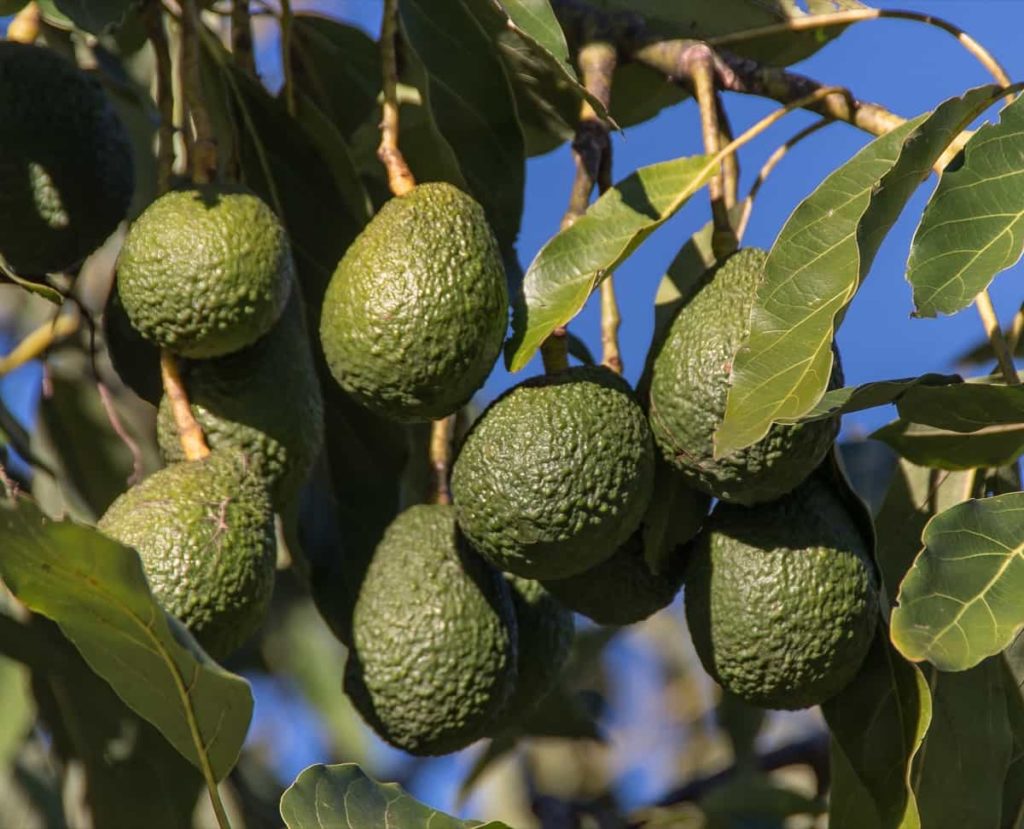
How much room does an Avocado tree need?
- Work in sand or other hard material to increase drainage if you have soil that doesn’t drain well. In addition, you need to leave 8 to 10 feet and 30 feet of space apart from buildings when planting Avocado trees. Planting Avocado trees properly is just the first step to getting fruit. The maintenance of Avocado trees should include deep, full water when the growing season is in full swing.
Why are my Avocados falling off the tree?
- This causes by both less and more water. Your Avocado tree requires well-drained soil and gives adequate water, especially during hot weather. The roots of the Avocado trees are close to the soil, so stress or damage to them causes unwanted fruit drops.
- The drop of new fruit is normal and is considered a means for trees to eliminate fruits with poor or weak seeds. If there is no drop, trees are likely to carry a crop with more cukes (these are seedless fruits that remain small).
Why are my Avocado tree leaves turning yellow?
- Avocado leaves turning yellow is usually a sign of nutritional deficiency. In addition, avocado trees with a high pH can easily become iron deficient, which can cause yellowing between leaf veins.
- If your Avocado tree gets too much water, it can turn the leaves yellow. Let the soil dry 50% before watering each time. When you water, evenly around the pot until the water flows into the saucer, then throw away excess water. Avocado trees love bright lighting.
How do you keep an Avocado tree healthy?
- You should water your Avocado tree deep and regular, but let the tree dry a little between the water. Mulch trees with wood chips 3 or 4 inches to conserve moisture. You should always leave several inches between the mulch and the tree trunk.
- Usually, when holes are found in the Avocado leaves, in late spring, grasshoppers or June beetles eat the leaves before unfurling. They cut one here and cut one there. Then, as the address waves, irregular holes appear throughout the leaf. When symptoms appear, a spray of horticultural oil or pyrethrin is recommended as a treatment for the Avocado tree.
How many times a year does an Avocado tree bear fruit?
An Avocado tree may produce 200 to 300 fruits per tree after about 5 to 7 years of age. However, the Avocado tree does alternate bearings. This means the tree can produce a large crop in a year and then a small crop the next year.
Can I grow an Avocado tree indoors?
- The fruit tree will reach a height of 15 to 20 feet and a width of 5 to 8 feet with full maturity. But when this container is grown, it will reach a height between 5 and 7 feet, allowing easy harvesting. Many dwarf varieties can help a winter, and proportionate weather gardener produces healthy fruits at home.
- Avocado trees can grow indoors in any hardiness zone, making them a very low-maintenance house plant. However, don’t expect fruit when growing Avocados in containers. They may take up to 10 years to reach the fruiting stage. If you get fruit, the taste isn’t as good as that produced commercially from the rootstock.
In case you missed it: Growing Avocado in Containers/Indoors – a Full Guide
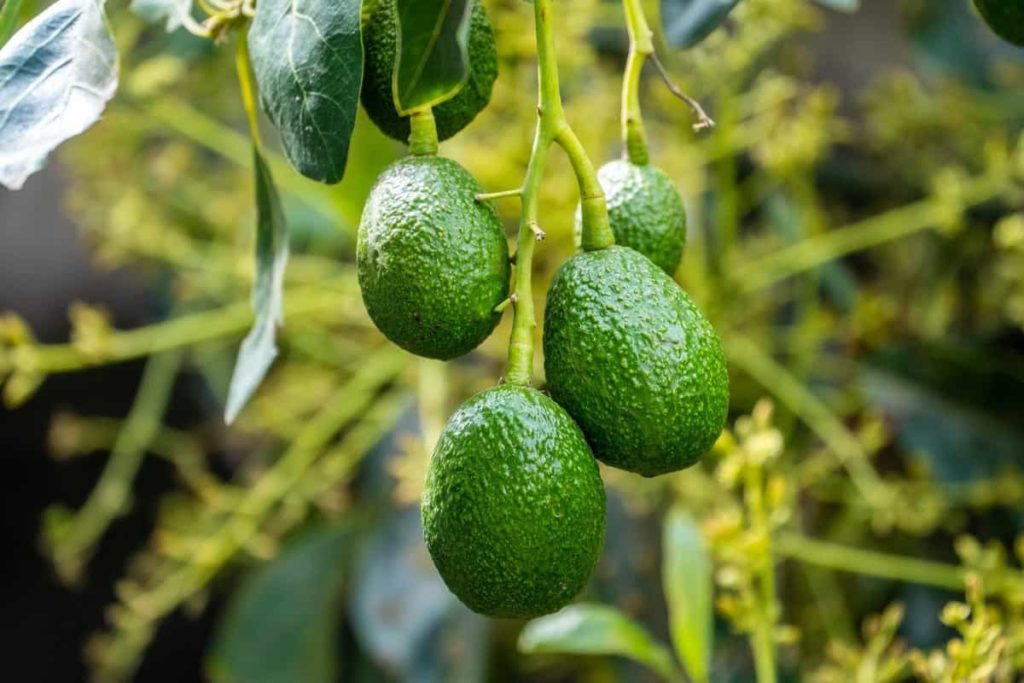
Conclusion
Avocados are one of the amazing summer fruits. Avocados are unique and come with various health benefits. You can grow this wonderful food with seeds you usually discard. Avocados thrive in warm and humid climates. While a typical Avocado tree can take a decade to mature, it’s much easier for an Avocado tree to grow at home if you follow the proper steps.
- Flower Garden Designs and Layouts for Beginners
- Planting and Spacing Techniques in Papaya: A Beginner’s Guide
- Growing Gold: Essential Techniques for Planting Pineapples
- How to Make Kalanchoe Plant Bushy: Home Remedies and Solutions
- 11 Reasons Why Your Gardenia is Not Blooming: Home Remedies and Solutions
- Eco Elegance: The Guide to Designing a Drought-Tolerant Landscape
- Gardening on a Slope: Strategies for Hillside Landscaping
- Nourish and Flourish: Top Organic Mulches for Thriving House Plants
- Everything You Want to Know about Indian Mogra Flower: Discover Uses and Growing
- Green Thumb Success: Expert Tips for Cultivating Greenhouse Pumpkins All Year Round
- Maximize Growth & Flavor: The Ultimate Guide to Companion Planting in Herb Gardens
- How to Control Rhododendron Problems Naturally: Home Remedies and Organic Ways to Fix Them
- Natural Magic: The Remarkable Benefits of Cinnamon for Plants
- Best Steps to Revive Dying Tulip with Natural and Organic Treatment
- 10 Reasons Why Your Angel Trumpet is Not Blooming: Remedies and Treatment
- How to Fix Periwinkle Leaf and Flower-Related Problems: Natural Remedies and Solutions
- How to Fix Zinnias Leaf and Flower Problems: Discover Natural and Home Remedies
- Organic Steps to Induce Lemon Tree Flowers: A Comprehensive Guide
- Bloom Booster: Crafting the Perfect Homemade Bougainvillea Fertilizer
- Optimizing Growth: A Guide to Applying NPK Fertilizer for Potted Plants
- 10 Best Homemade Fertilizers for Rubber Plant: DIY Recipes and Application Method
- How to Boost Female Pumpkin Flowers: Effective Steps for More Flowers and High Yields
- Transform Your Indoor Garden: Top Benefits of Pink Salt for Houseplants
- 10 Best Homemade Fertilizers for Peacock Plants (Calathea): Easy DIY Guide
- Unlock Blooms: 9 Reasons Why Your Potted Chrysanthemum is Not Blooming
- 8 Reasons Why Your Potted Hibiscus is Not Blooming: Fix it with Simple Solutions
- Unlock Blooms: 9 Key Reasons Your Potted Frangipani Won’t Flower
- 10 Reasons Why Is My Ice Plant Not Blooming: Remedies and Treatment
- 10 Reasons Why My Potted Hydrangea Not Blooming: Treatment and Remedies
- 10 Reasons Why is My Wisteria Not Blooming: Remedies and Treatment
- 10 Reasons Why is My Goldfish Plant Not Blooming: Remedies and Treatment
- Maximize Your Space: Ultimate Guide to Balcony Gardening with Grow Bags
- 10 Reasons Why Your Iris is Not Blooming: Remedies and Treatment
- 10 Reasons Why Your Anthurium Plant is Not Blooming: Treatment and Remedies
- 10 Reasons Why Your Aquaponic Plants Are Not Flowering: Remedies and Treatment
- 10 Reasons Why Your Agapanthus is Not Flowering: Remedies and Treatment